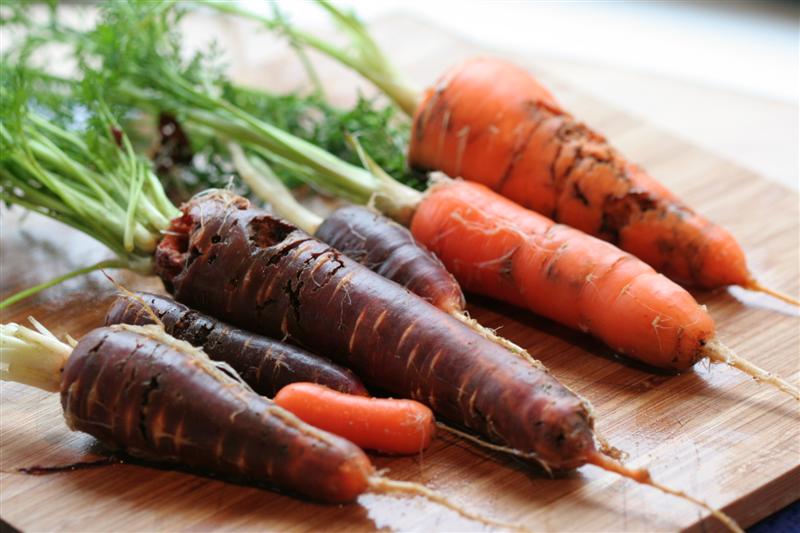This is what my carrots looked like this year: riddled with tracks from the disgusting, putrid, foul, menacing carrot rust fly. Those little buggers can sniff out a carrot with superhero powers so I planted carefully and didn’t have to thin them (thinning releases the smell and attracts the flies), but the females still found my carrot patch, laid eggs, and a week later the larva fed on the hidden roots. There’s nothing worse than lovingly growing a patch of beautiful carrots only to have them eaten up by unwelcome guests. Bummer.

However, there are steps you can take to prevent disease and pests from interfering when growing carrots. The suggestions out there to avoid damage range from scientific to witchcraft, so trial and error is your best bet. Here are a few suggestions for keeping your carrots healthy once they’re planted.
- 1. Cover your crop with a lightweight, permeable row cover that will let both light and water in, but keep flies out.
- 2. Rotate your crop as a good practice for all veggie gardening to reduce instance of disease, pests and nutrient depletion.
- 3. Plant a fly-resistant variety like Fly Away which they don’t like that much. Then plant another patch farther away of bait carrots that they will hopefully choose instead.
Of course, the better start that carrots have, the more likely they are to stay healthy as they mature. Try these tips for growing carrots for the best results:
- Plant carrot seeds in fertile, well-drained soil that has been sifted to remove any stones or hard debris that will obstruct the root growth (and make funny shaped veggies).
- Sow seeds according to the plant depth and spacing as recommended on the seed packet for each variety.
- Carrot seeds are quite small, so it will be necessary to thin out your plants when they grow. You can do this by cutting (not pulling) out the seedlings that are the weakest, leaving the strongest lots of room to grow a yummy root.
- Keep seeds moist while they germinate. Once sprouted, make sure they get lots of sun (eight hours per day) and water (don’t let them dry out on hot days). As they grow they will push up their shoulders from the ground so mound soil around them periodically.
- Plant carrots in spring and summer for a fall harvest or plant over-wintering varieties in late summer for a winter harvest.




I commend you on trying. I’ve yet to try to grow anything edible. That dark carrot looks fascinating.
I make my own seed tapes and mats. This lady has a great tutorial on haw to make them. I have tried it and it works great, no more thinning and you really save seed.
It actually takes less time to make the mat than to thin and I can make them at my kitchen table and don’t kill my back and knees bending over. Here is the link and good luck.
http://annieskitchengarden.blogspot.com/2009/09/september-22-2009-home-made-seed-mat.html
Thanks for all the support everyone! I guess you all know the pain you feel when someone gets your precious veg before you do.
Bren – you would NOT want to eat those carrots. Not only were the critters still in there, but the buggers change the flavour of the carrots too. Grrr.
Debbie – THANK YOU THANK YOU THANK YOU! I’m so grateful for the link.
I’ve had those carrot flies before, little buggers. I hope they left you some of the crop. You can make your own seed tape with white glue and toilet paper, here is the link: http://annieskitchengarden.blogspot.com/2009/09/september-22-2009-home-made-seed-mat.html
Well I should read first, Debbie beat me to it :-)